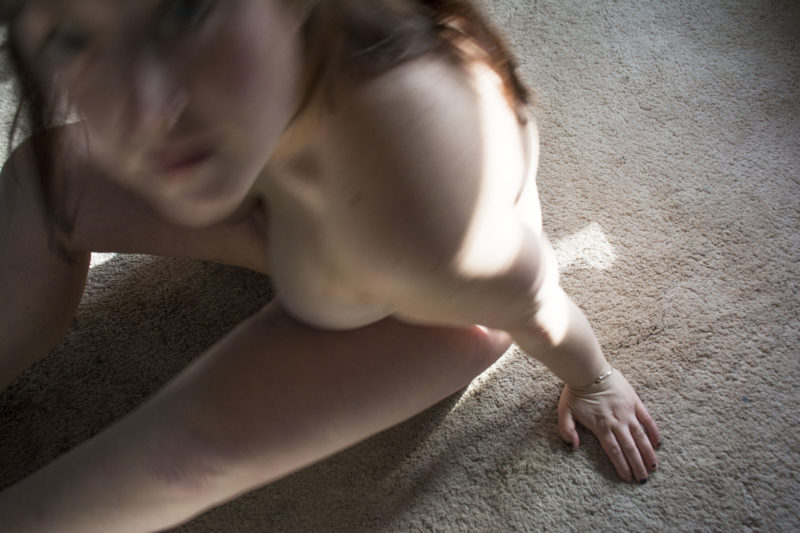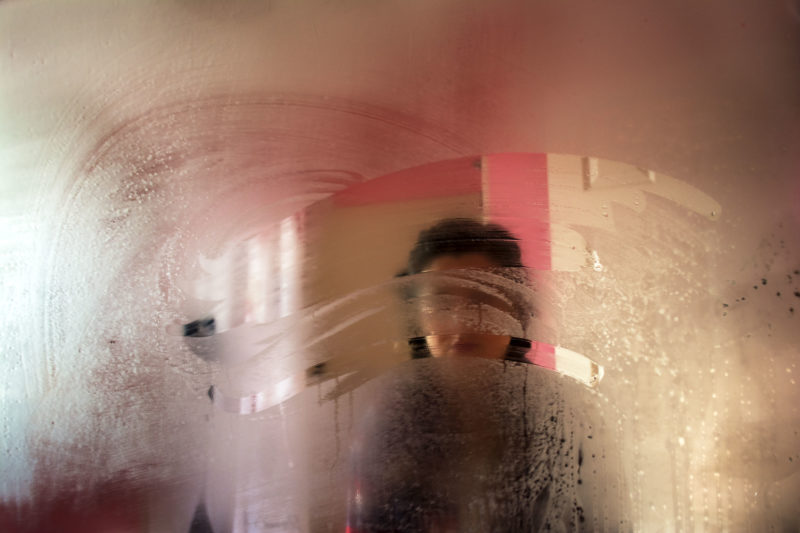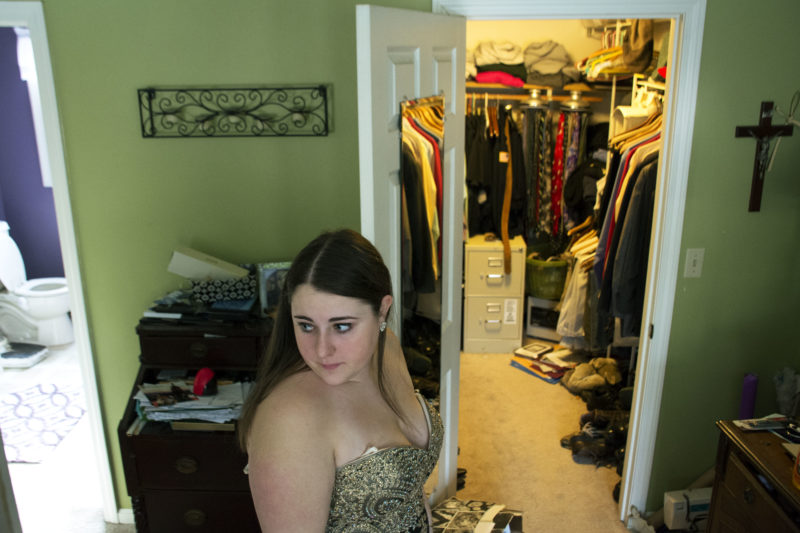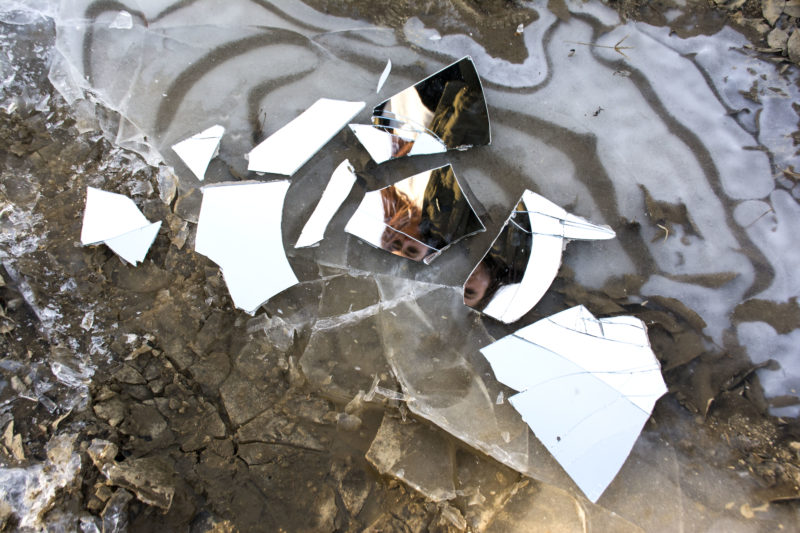Meet Abby Wright: Photographer behind “Vinegar”
Abby Wright is a Senior Photography student in CVPA at UMass Dartmouth and a fellow pushy women. She is the creator of “Vinegar”, a body of work that speaks her truth about feminism and what she has experienced as a women in today’s society.
“Vinegar” is a part of “Self-Evident Truths”, a collection of works by eight Photo students at UMD, that focuses in on how they view the world and society today.

“Self-Evident Truths” will be installed here at Groundwork! on May 4th and we will be celebrating the Opening with a party on May 11th! Find out more about the event here, or on our Facebook! Read more about Abby and “Vinegar” below:
Can you describe “Vinegar” to us?
My current body of work studies what it means to me, being female today in a world where we are both encouraged and discouraged by society and our daily surroundings from adopting feminist ideals. Coming from a suburban background, these concepts were the foundation of the world which was my upbringing.
My goal is to capture this concept through portraiture mostly made within interior spaces. The subject is occasionally obscured or hidden from view. Through these visual elements, I wish to draw attention to the fact that a female is not merely an object of admiration, temperamental, unpredictable, led by emotion, nor primarily concerned with being perceived as decorative.

While some images include full figures, others show merely body fragments. The work contains images where I am not physically in the frame yet they are all self portraits.
The portraits are made within the house my parents built in which my sisters and I have spent our adolescence. This is where we had the opportunity to absorb the information presented to us in the outside world and figure out where we stood, what our own ideals were. To me, growing up, I felt like I was presented with numerous contradictory messages. I was always told to believe in myself. I could be whoever I wanted and I could accomplish anything that I set my mind to. Yet at the same time, I was presented with information such as;
“Swearing isn’t lady like. Don’t walk alone at night. Always lock the car and look in the back seat. Be alert when walking. Don’t be on your phone, pony tails are easy to grab and pull you to the ground. Attackers always look for those who could be caught off guard. Speak when spoken to. Don’t interrupt. Don’t be bossy.”
The list continues. To this day these concepts still make me angry. I can do and be whatever I want to an extent; yet at the same time always looking over my shoulder and being encouraged to be careful and not talk back.
This body of work explores the concept of challenging ideals frequently placed on young females. Though my sisters and I each have personalities which vary drastically, and are all of a similar age, we all stand with our own perspectives, views, and experiences of the need to possess strength and to be heard. The imagery includes strong figures with settings which appear to be seen as barriers between the camera and the individual, often leading to a point of escape within the photograph.

My work stems from my need to express my psychological processing of the contradictory messages imposed upon me as a young woman and my connection to understanding my place in the world.
Can you tell us about your artistic style?
I have definitely been told and teased about the fact that I am a prolific artist. I always feel the need to be making something or turning the things that I see and feel into physical experiences. If I am not producing a lot I feel super unproductive. I think that is what art is to me and that’s why it is so important to me. It is my way of translating things that I am thinking and going through into elements that people can experience and connect to themselves. I also think it is so interesting that what I am presenting can have a totally different meaning or relation to a viewer.
What/ who first got you interested in photography/ art and when?

I feel like I always loved art and making things but my uncle who is a graphic designer always was there to help me grow by encouraging me to continue this process and always offering criticism. As far as photography, I bought the first camera I ever owned – a Nikon d3100 – when I was a freshman in High School when I had saved enough money from scooping ice cream, which was my job at the time. That was my first introduction to the medium.
What is your biggest inspiration?
Nan Goldin is photographically my biggest inspiration. I have always been drawn to her style and think it’s so simplistically beautiful and has so much to say for itself. I am obviously very impressed by many photographers but her diaristic style is so honest, raw, and moving to me. I think this style is so undervalued. I really can’t put into words how much her work moves me. In daily life though I really can say I am visually inspired by most things I see.
Tell us about the process you took creating “Vinegar”?
The body of work started with all self portraits but as I was creating work I wanted to incorporate people other than myself, I was just unsure of the way in which I wanted to do so. I started to photograph my sister as well. I then became very interested in the fact that I have three sisters, we are all around the same age and that we are all complete opposites of each other. Even though this is true we have very similar ideals and always stand for what we believe in. The body of work began to evolve into portraits of the four of us which became interesting because at times we do look very similar, so it became harder for the viewer to know which one of us was being depicted.

Have you ever hit a creative roadblock? How did you deal with this?
HELL YES. Especially when working on Vinegar. When I first started this project I had an idea and concept which I wanted to portray but wasn’t sure exactly how I wanted to make the body of work speak. At the start of the project I was making all self portraits and struggling to make connections to each other. I was so overwhelmed and trying too hard to make art which is never good, instead of my regular style which is to just show what I am seeing and experiencing. I think the best way to do deal with not knowing where to go and feeling really overwhelmed and lost is to just keep producing and talking about what you’re producing.
What is your favorite part about being a photographer/ artist?
My favorite part of being an artist and photographer is the fact that to myself I am never satisfied. There is always something I want to show and explain and there are always ways for me to grow and become a stronger artist and human and see things in a new light. I also love the fact that art is an exploration into the artist as well as the world. I love that it has the power to challenge and engage society. Art has to deal with ethics and at many times is anthropological. It starts a conversation about things we can view as problematic.

Do you have a favorite photo in “Vinegar”? Can you tell us why?
Hmmmm. That’s a hard one. I really love the relationships which the pictures have with each other, especially in the book which I produced with the full body of work in it. I think am more attached to the relationships and how the pictures play off of each other.
What is next for you and/or your photography career?
This summer I am going to be living and working on Block Island, RI. I am really excited to be producing new and fresh work there.
How have you changed or evolved as a photographer from Freshman year to Senior year in CVPA at UMD?
Technically, I have evolved to a large degree. Emotionally in my work I think I have found a certain style that can be identified.
- See ya later Groundwork! - May 12, 2017
- Meet Abby Wright: Photographer behind “Vinegar” - May 1, 2017
- Member Spotlight: Daniel Calabrese - April 21, 2017
